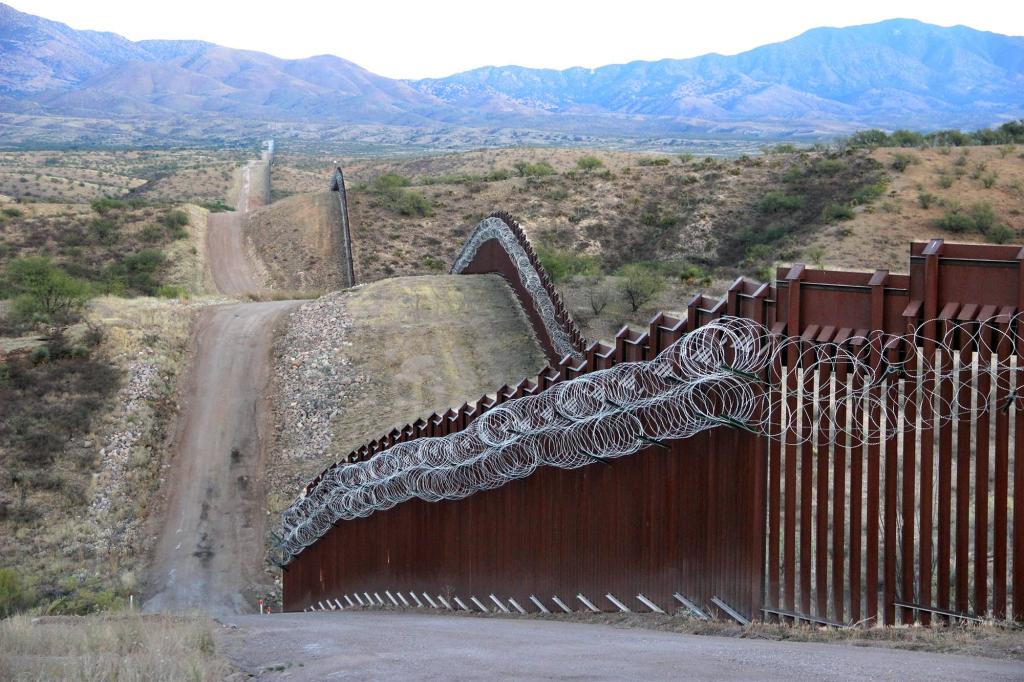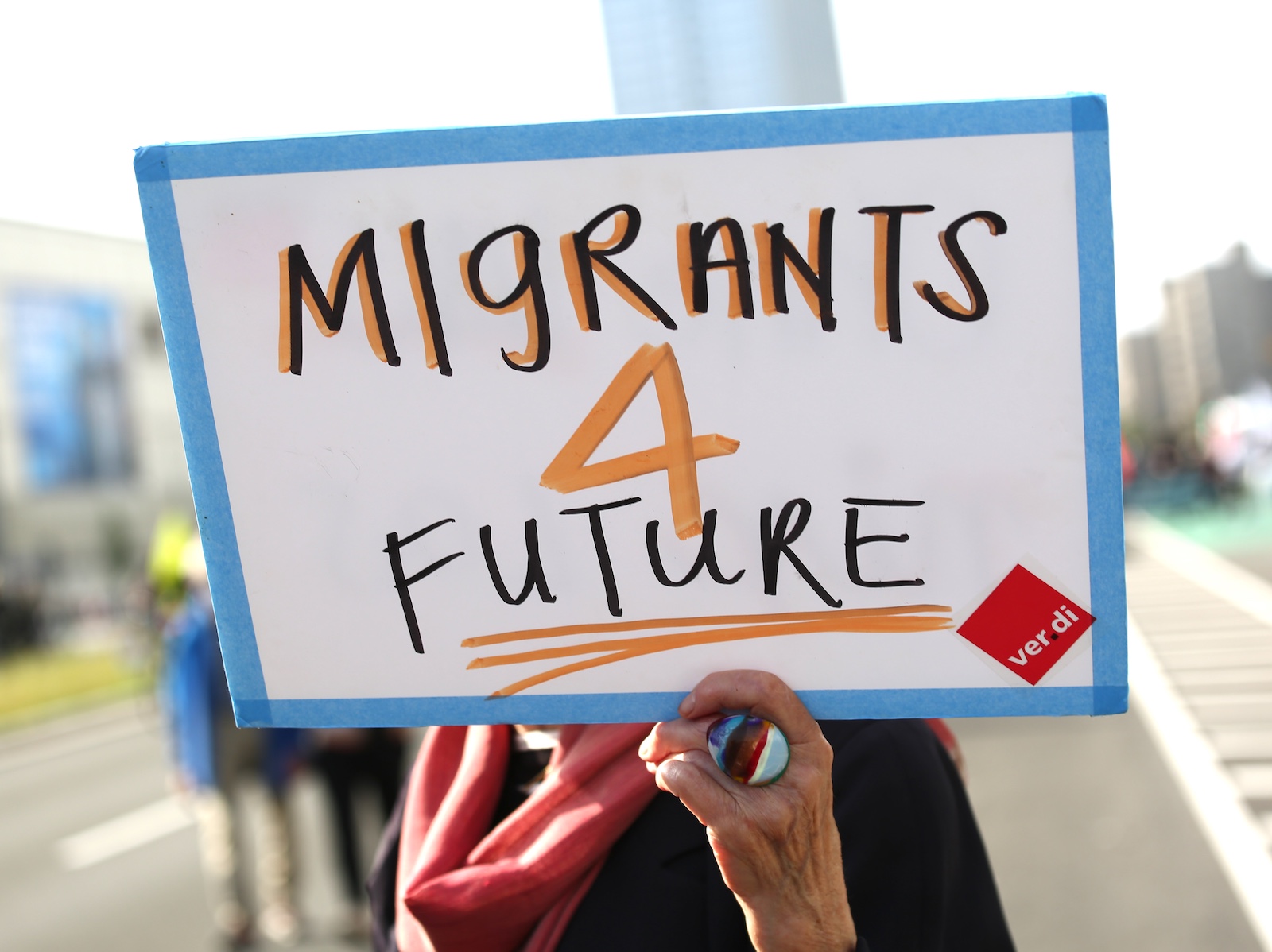Rising seas and extreme weather will drive millions more people around the globe to relocate their homes, businesses, and lives, according to the latest U.N. climate report. But rather than view this solely as a bad thing, the report’s authors say climate migration should be seen as a key part of adapting to a warming future.
From scenes of scared Americans fleeing to Mexico in The Day After Tomorrow to the Biden administration’s discussion of migration as a matter of national security, climate migration is often viewed by wealthier nations as one of the many negative impacts of climate change. This burden-focused narrative has been so influential, several leading nations have bolstered and militarized their borders.
But according to last week’s major report on climate impacts and adaptations from the Intergovernmental Panel on Climate Change, or IPCC, migration can be a solution — one that helps people survive by moving out of harm’s way or, in seeking employment elsewhere, supporting families back at home. There are some caveats: The experts say this framing only works when the migration is planned for. “We can make migration part of adaptation to climate change if we enable and create support systems for it,” said David Wrathall, a natural hazards professor at Oregon State University and lead author of the report. “The costs of not preparing for this are just too high.”
To be clear, climate migration is already happening. Since 2008, an average of 20 million people have been internally displaced each year. The biggest drivers are floods, extreme storms, droughts, and wildfires, which may directly force people to move or disrupt climate-dependent ways of life like agriculture. The vast majority of the time, people migrate internally, or within their own countries, often from rural areas to nearby urban centers. Those that do cross international borders tend to remain within the same region.
Since the last IPCC assessment report in 2014, more evidence has emerged connecting climate change to migration and displacement. The hotspots for migration, according to the new report, are in Sub-Saharan Africa, Asia, and South America, though small island nations are disproportionately impacted due to the effects of sea-level rise. But climate migration is hardly limited to those parts of the world: In the United States, for example, hurricanes, wildfires, and drought are already shaping people’s decisions about where to live, voluntary or not.
Even though it’s born of terrible circumstances, climate migration can lead to positive outcomes. The report stressed that migration works best when it’s “safe and orderly,” and people are empowered to freely make decisions. “Migration is neither good nor bad inherently,” said Robert McLeman, an environmental studies professor at Wilfrid Laurier University in Ontario and coordinating lead author of the report. “It’s good when you allow it to occur legally and with dignity and with agency.”
McLeman said lowering the legal barriers for climate migrants could allow people to more easily find safe housing or legal, secure employment to send money home, an important way that families build resilience. Trying to prevent climate migration, he argued, is a lose-lose scenario that leads migrants to attempt clandestine border-crossings: “It’s not good for the migrants and it’s certainly not good for the receiving community,” he said.
While the idea of safe, planned migration isn’t new, it runs counter to the current trend in global politics, which is to try and keep migrants out. Even when migration happens within a nation’s borders, countries may discourage people in the countryside from moving into cities. The new IPCC report suggests that will have to change for migration to work as a solution. Central to that idea is the importance of mobility in people’s lives. In a climate-disrupted world, more people are going to need to be more mobile. Not planning for that could lead to poor health, tragedy, and intergenerational poverty.
Countries can help make migration a climate solution by investing in basic infrastructure and strengthening social systems like schools, housing, and healthcare, so they can accommodate growing populations. When cities grow without that planning, precarious slums fill in the gaps. Governments could defray the costs of moving, or provide training for skills that will help people find work in new places. Guaranteeing migrants’ human rights and labor rights would “ensure that migration is an adaptation strategy for all involved,” said Kayly Ober, senior advocate and program manager for the Climate Displacement Program at Refugees International.
Guidelines to prepare for migration are outlined in a handful of global agreements, like the United Nations’ Global Compact on Safe, Orderly, and Regular Migration. A report recently assessed countries’ progress on the non-binding compact since it was signed in 2018, and recommended nations make more concrete steps toward achieving goals like ensuring migrants have access to healthcare and COVID-19 vaccinations.
The IPCC authors note that it’s very difficult to make projections on the future of migration, which depends on complicated factors like population growth, governance, and other adaptations that may or may not be put in place. One estimate suggests that by 2050, 140 million people or more across Sub-Saharan Africa, South Asia, and Latin America will undertake internal, climate-driven moves. The long-term outlook is hazier, but experts do know more severe floods, storms, and drought will likely become more frequent, forcing even more people from their homes — especially in vulnerable regions with limited ability to adapt.
Of course, migration is often not an adaptation, but a last resort. Even without political barriers, it’s a costly, destabilizing experience. The new report noted there are many communities for whom migration represents failure or impossibility: small island nations or “immobile” groups who can’t move because the costs are too high or they are simply unwilling.
That’s part of the reason cutting emissions is crucial as ever, even as experts urge nations to plan for adaptation measures like migration. “There’s a lot of avoidable hardship here,” McLeman said.



